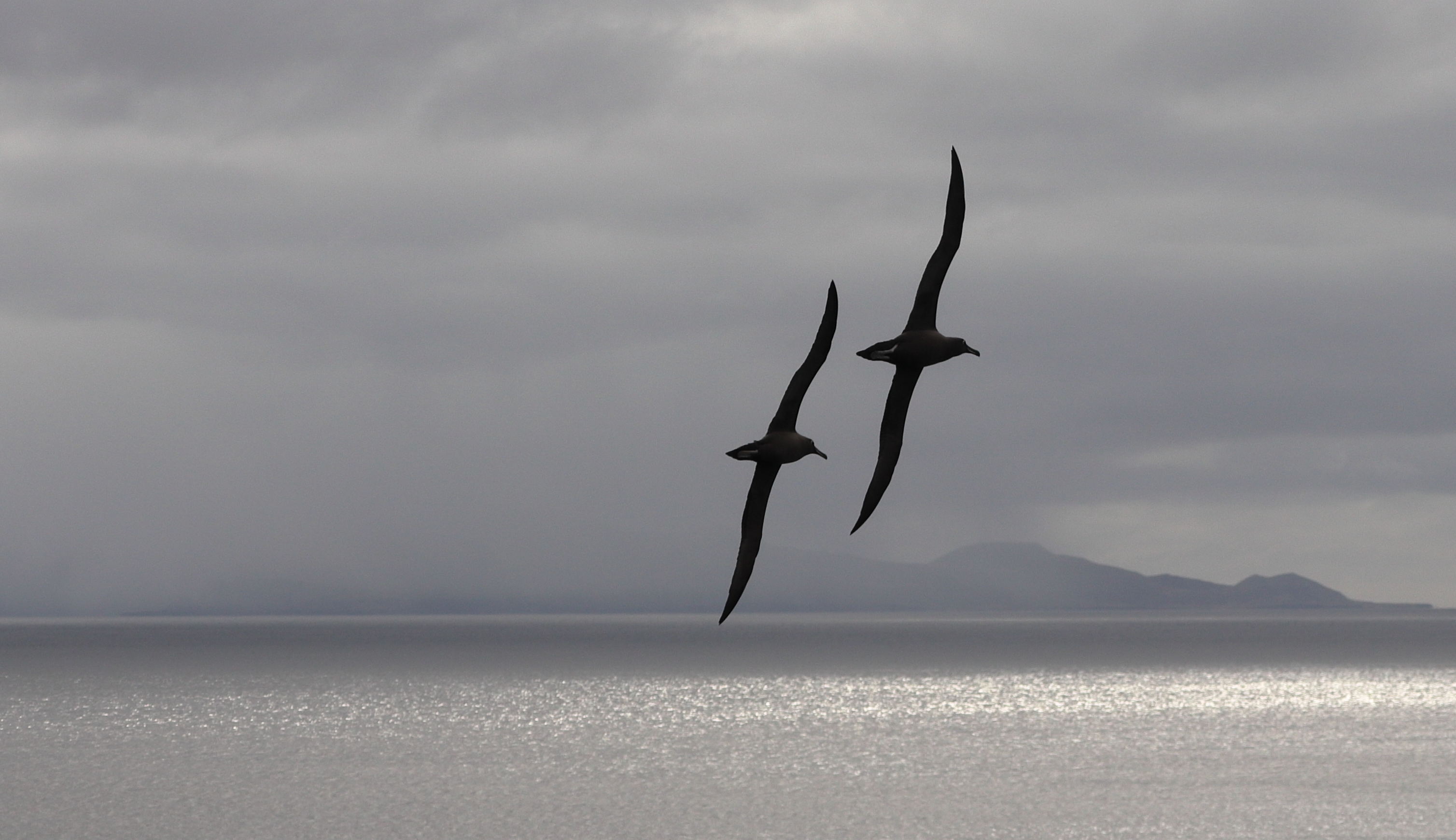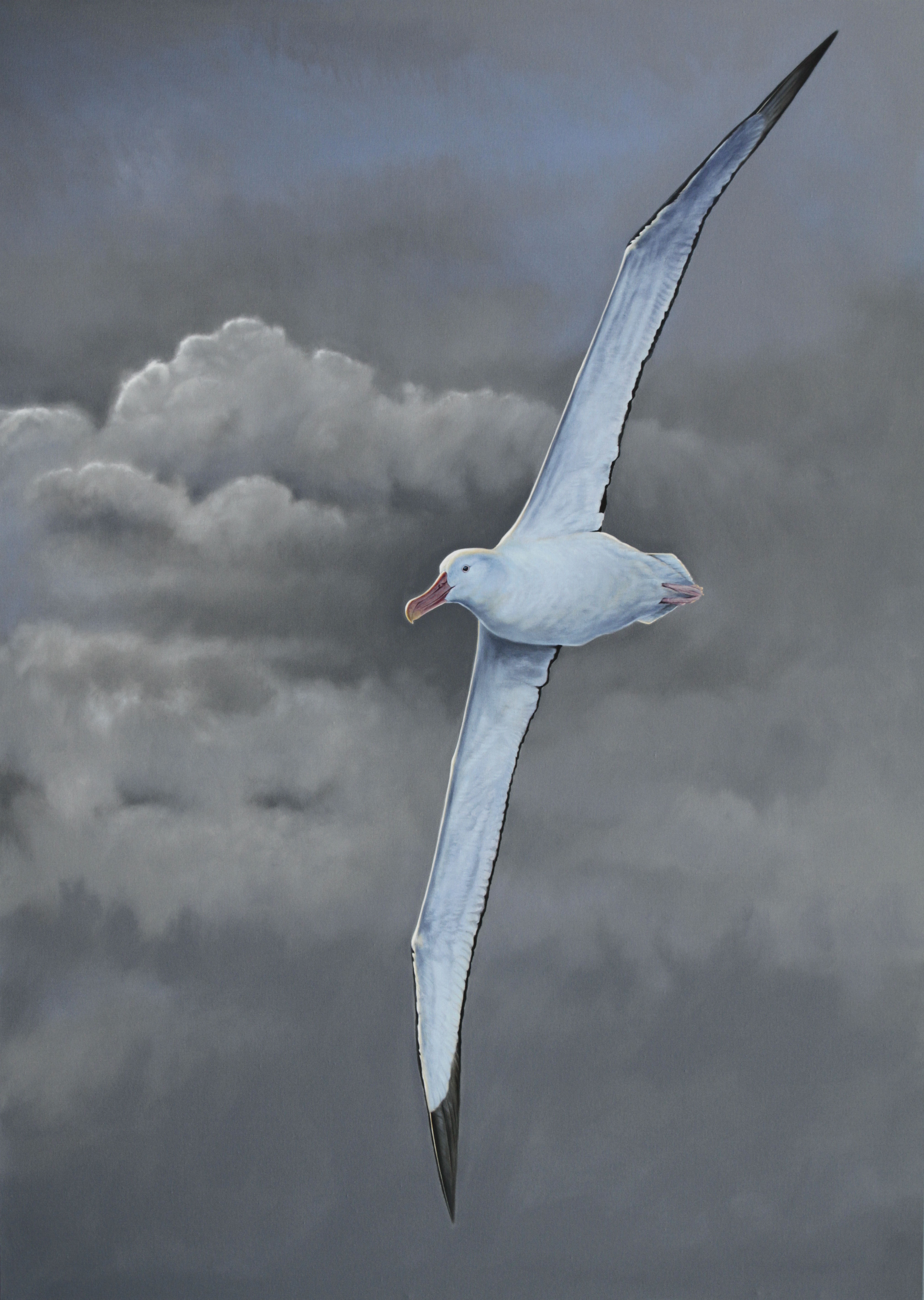
Guided by infrasound? A Black-browed Albatross leaves its South Atlantic breeding island for the open sea; photograph by Martin Collins
Samantha Patrick (School of Environmental Sciences, University of Liverpool, United Kingdom) and colleagues have published open access in the journal Frontiers in Ecology and Evolution on whether seabirds use low-frequency sound generated by waves and the coastline to navigate – and how to test their hypotheses.
The paper’s abstract follows:
“Seabirds are amongst the most mobile of all animal species and spend large amounts of their lives at sea. They cross vast areas of ocean that appear superficially featureless, and our understanding of the mechanisms that they use for navigation remains incomplete, especially in terms of available cues. In particular, several large-scale navigational tasks, such as homing across thousands of kilometers to breeding sites, are not fully explained by visual, olfactory or magnetic stimuli. Low-frequency inaudible sound, i.e., infrasound, is ubiquitous in the marine environment. The spatio-temporal consistency of some components of the infrasonic wavefield, and the sensitivity of certain bird species to infrasonic stimuli, suggests that infrasound may provide additional cues for seabirds to navigate, but this remains untested. Here, we propose a framework to explore the importance of infrasound for navigation. We present key concepts regarding the physics of infrasound and review the physiological mechanisms through which infrasound may be detected and used. Next, we propose three hypotheses detailing how seabirds could use information provided by different infrasound sources for navigation as an acoustic beacon, landmark, or gradient. Finally, we reflect on strengths and limitations of our proposed hypotheses, and discuss several directions for future work. In particular, we suggest that hypotheses may be best tested by combining conceptual models of navigation with empirical data on seabird movements and in-situ infrasound measurements”.
With thanks to Richard Phillips.
Reference:
Patrick, S.C., Assink, J.D., Basille, M, Clusella-Trullas, S., Clay, T.A., den Ouden, O.F.C., Joo, R., J., Zeyl, J.N., Benhamou, S., Christensen-Dalsgaard, J., Evers, L.G., Fayet, A.L., Köppl, C, Malkemper. E. Pascal, M., López, L.M., Padget, O., Phillips, R,A., Prior, M.K., Smets, P.S.M. & van Loon E.E. 2021. Infrasound as a cue for seabird navigation. Frontiers in Ecology and Evolution doi.org/10.3389/fevo.2021.740027.
John Cooper, ACAP Information Officer, 03 December 2021

 English
English  Français
Français  Español
Español 


